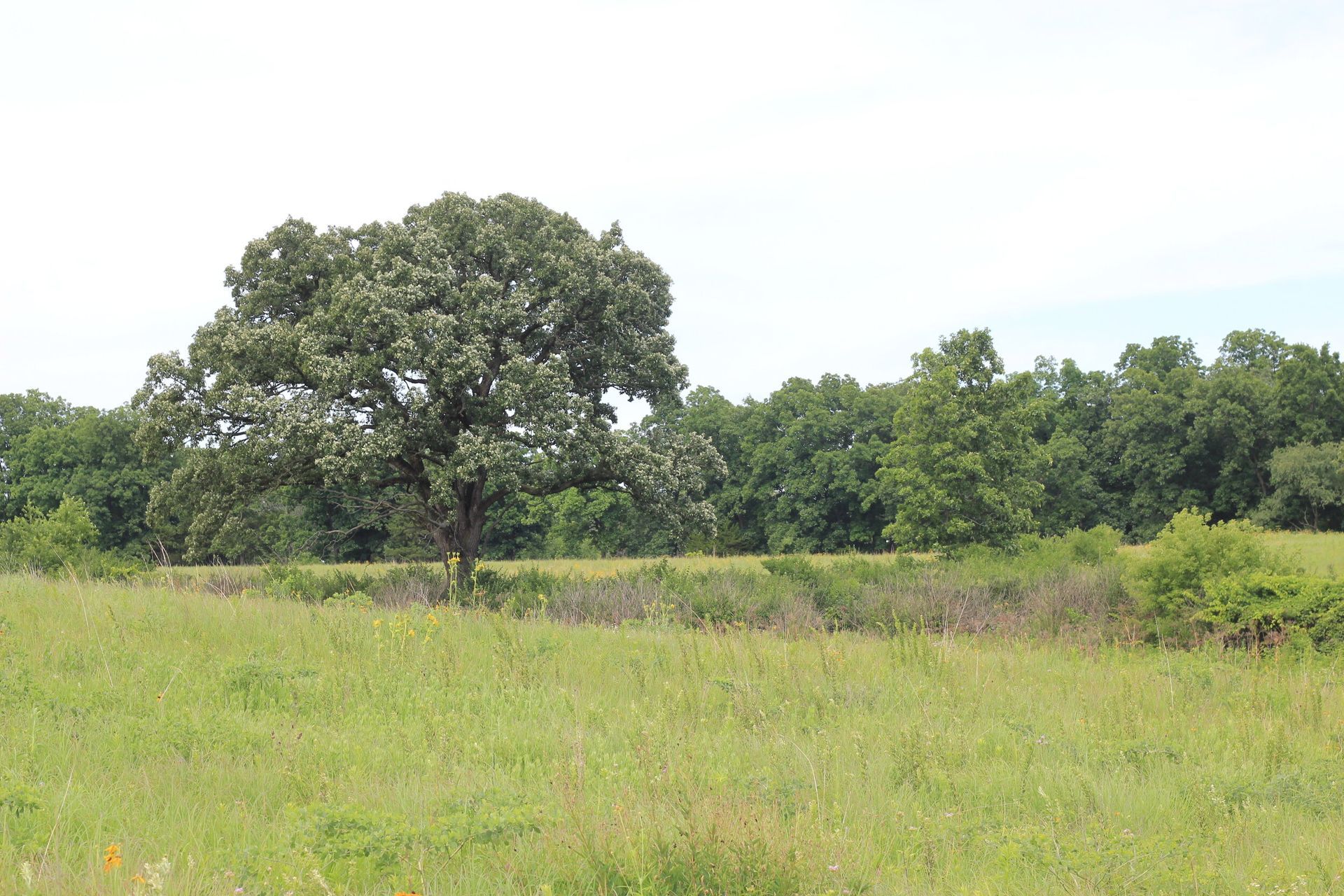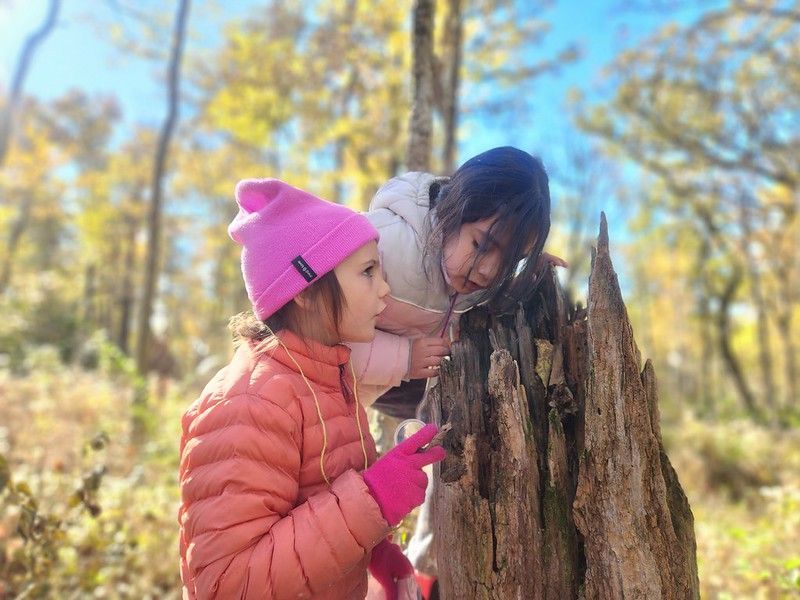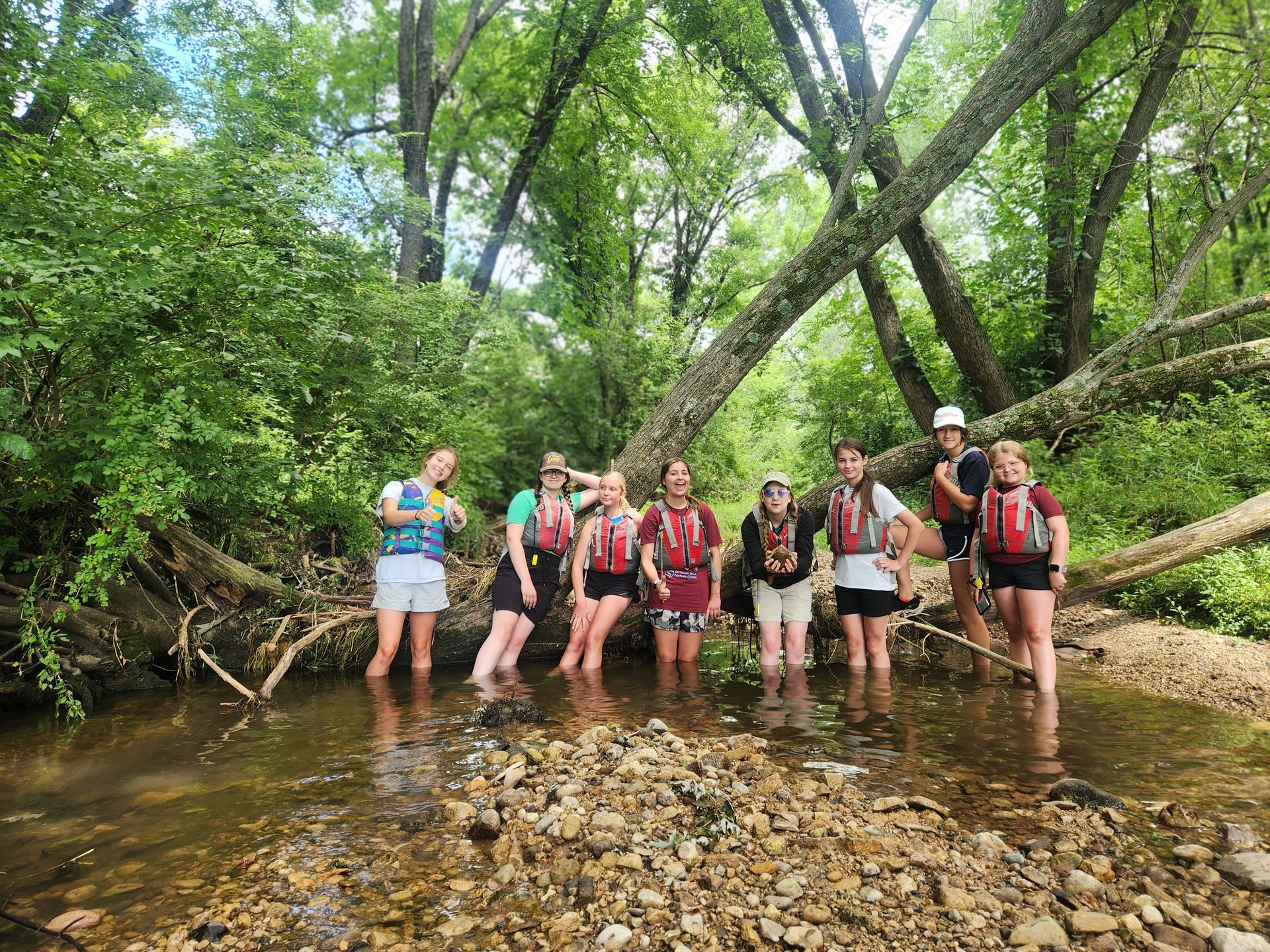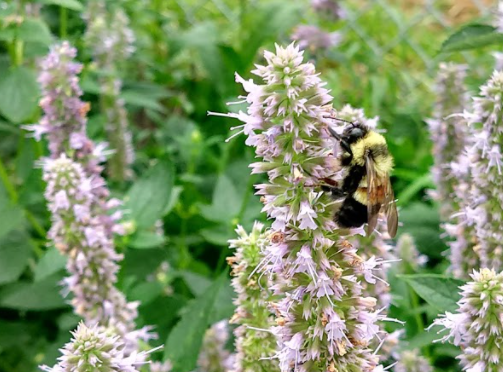Each May, we celebrate Endangered Species Day by learning about, and taking action to protect, our endangered species. Here in Winnebago County, we are home to a couple dozen endangered species, and in honor of Endangered Species Day I wanted to talk about our very own Rusty Patched Bumblebee, Bombus affinis. (right photo by Jillian Neece)
FIELD NOTES BLOG
Rusty Patched Bumblebee
In celebration with the upcoming Endangered Species Day (May 17) and World Bee Day (May 20), we're re-introducing the following blog post that was originally posted by Jillian Neece on May 19, 2021.
Until a few decades ago, the Rusty Patched was one of the most common bumblebees on our landscape, as well as much of the upper midwest and east coast. Their distinctive rusty-orange patch on the yellow portion of their abdomen made them easy to identify and track, and since they were so common, experts were not concerned about their populations.
But all that changed around the turn of the century. Beginning around 2003, Rusty Patched Bumblebees started showing up less and less on annual bee surveys. Now, rather than finding them all across the midwest and eastern US, they are almost exclusively found in Minnesota, Wisconsin, and Illinois, which makes up only 0.1%
of their original range.
With their populations declining so significantly, experts became very concerned. In 2017, the Xerces Society for Invertebrate Conservation succeeded in listing the Rusty Patched under the U.S. Endangered Species Act, making it the first bee to be listed.
While getting its name on a list may not seem like a big step toward protection, being a federally endangered species has its perks. Not only are researchers more likely to get funding for projects that study endangered species, but land managers can apply for more funding to protect and restore Rusty Patched habitat.
Why the decline?
Well, lots of things. Many researchers think that the decline was triggered by diseases that originated in commercial bumblebee colonies. Like honeybees, some bumblebees are raised to help pollinate crops. These bumblebee colonies are raised very close together, which allows disease to spread quickly between colonies. Then, once the colonies are released to pollinate agricultural fields or greenhouses, these commercial bees interact with wild bees and can pass diseases to them. In this case, commercial bumblebee colonies were raised in Europe and released in the U.S., which likely brought a pathogen called Nosema bombi to wild American bumblebees.
But disease isn’t the only thing putting pressure on Rusty Patched populations. Around the same time that Rusty Patched Bumblebees became scarce, the use of insecticides called neonicotinoids became more common. These insecticides have been shown to be deadly to many types of bees, so experts believe that they likely contributed to this decline.
Another factor that has put more stress on bumblebee populations, and the one that relates most to us in Winnebago County, is the loss of habitat. Rusty Patches need pollen, nectar, and resources for shelter in order to survive, so if their access to the habitat that sustains them is threatened, these bees are in trouble.

What kind of habitat does the Rusty Patched look for?
I’m glad you asked! They can be found in a variety of habitats, including woodlands, farms, and even city parks, but researchers think that the real estate they really can’t get enough of is oak savannas. These areas are similar to prairies, with tall grasses and bountiful flowers, but also contain a few trees to provide space for shade-loving plants as well. In general, savannas are characterized by having less than 50% of the ground shaded.
You may have noticed a significant removal-of-trees in the last few years by Forest Preserve staff, and if you’re like me, your first reaction was “Whaaat!? No!!” For so long, planting trees has been synonymous with environmental protection, so it was heartbreaking and confusing to see land managers cutting down what seemed to be perfectly good trees!
But let's take a step back. Think about the history of this land and which habitats it used to support. Prior to European settlement, much of what is now the midwestern United States consisted of tallgrass prairie and oak savannah. And this was no accident. The native tribes who stewarded this land (and continue to steward the lands on which they live), including the Očhéthi Šakówiŋ,
Waazija (Ho-Chunk / Winnebago),
Myaamia,
Bodéwadmiké (Potawatomi),
Sauk and Meškwahki,
Peoria, and
Kickapoo nations, conducted periodic burns over the landscape to ensure that prairie ecosystems would not be encroached upon by forests. When European settlers backed by the U.S. government forcibly removed tribes from the land, fire was eliminated from the landscape, which allowed forests to take over.
Now let’s fast-forward to the Forest Preserve staff cutting down trees. Contrary to what gut-reactions might suggest, removing these trees and re-introducing controlled burns is actually restoring the landscape. And here is where our friend the Rusty Patched Bumblebee comes back in.
Thanks to the help of our all-star BeeSpotting community scientists, we have documented these bees in our area! This allows us to apply for funding from the federal government among other organizations to help us restore oak savanna and prairie habitat to support Rusty Patched populations. So, in the kind of coincidence that might not actually be coincidental at all, by installing habitat for Rusty Patched Bumblebees, we are simultaneously restoring our ecosystems to their pre-European-settlement glory! It’s funny how nature works that way.
While we know that there are multiple factors at play in bumblebee declines including competition with non-native honey bees, disease, and pesticide use, loss of habitat remains a major contributor. So next time you see some Forest Preserve staff removing trees out at preserves like Cedar Cliff, Stone Bridge, Four Lakes, Kieselburg, and even here at Severson Dells, make sure to thank them for doing the work needed to restore this land and protect its native species!
Can I do anything to help?
Here’s the fun part: there are steps you can take in your own backyard! One of the best things you can do is plant native flowers. Make sure you have a variety of species so that something blooms throughout the entire season. Also, avoid using pesticides, pesticide-treated seeds and garden plants (always check when you buy) and other chemicals like herbicides and fungicides. Leaving yard scraps like leaves, woodpiles and grass clippings in your garden can help create nesting habitat for bees as well.
If you don’t have a yard of your own, no worries: you can always take these steps in your neighborhood, schoolyard, or local park! Try reaching out to your neighbors or classmates to see if they would be interested in joining you; there’s power in numbers! Plus, you could join our team of BeeSpotters, a community science group that helps monitor bumblebees in our area!

RECENT ARTICLES
































